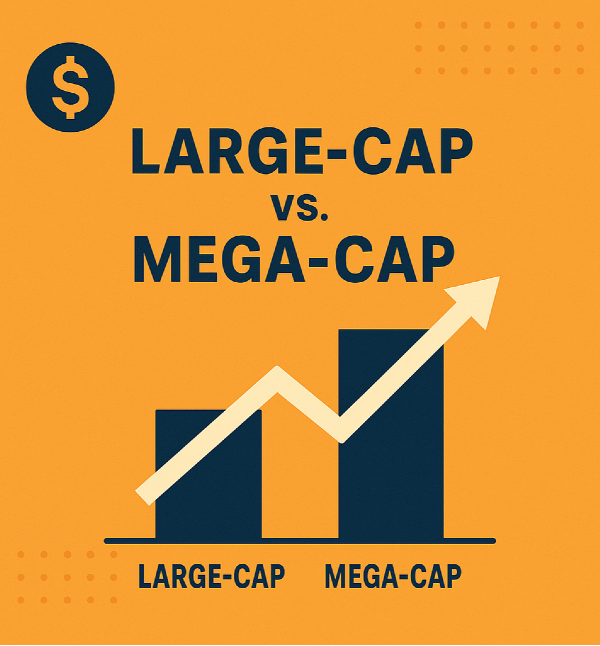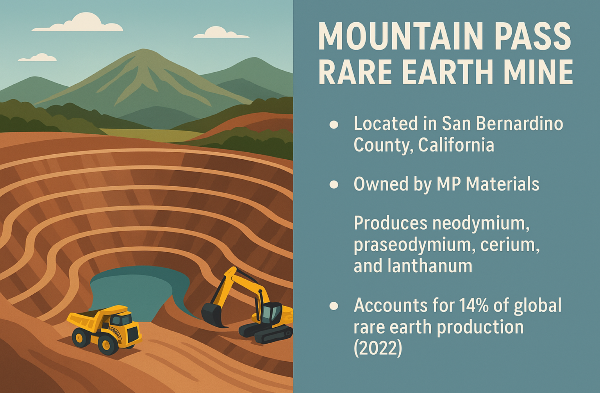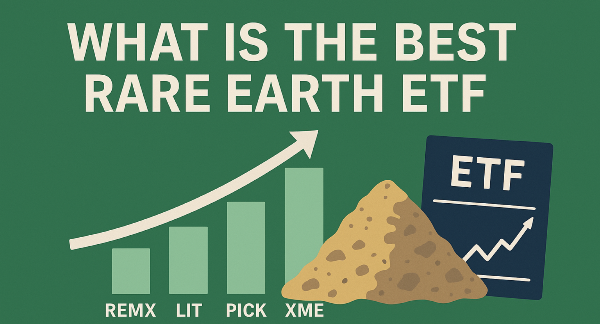Introduction
Stocks are classified based on their market capitalization, which represents the total value of a company's outstanding shares. This classification helps investors assess risk, growth potential, and financial stability when making investment decisions. Companies are generally grouped into categories such as small-cap, mid-cap, large-cap, and mega-cap, each offering distinct characteristics and investment opportunities. Understanding the differences between these classifications is essential for portfolio diversification and strategic asset allocation.
Defining Large-Cap Stocks
Large-cap stocks are shares of companies with a market capitalization of $10 billion or more. These companies are typically well-established, financially stable, and industry leaders. Their size and influence allow them to maintain strong revenue streams and consistent profitability. Large-cap stocks are often included in major indices such as the S&P 500 and Dow Jones Industrial Average, reinforcing their market presence.
Several characteristics define large-cap stocks, including strong brand recognition, diversified revenue streams, and reliable dividend payouts. Their financial stability makes them attractive to conservative investors seeking lower-risk opportunities. Notable examples of large-cap stocks include Apple, Microsoft, Amazon, and Johnson & Johnson.
Defining Mega-Cap Stocks
Mega-cap stocks are the largest publicly traded companies, typically with market capitalizations exceeding $200 billion. These firms dominate their industries, wielding significant influence over global markets and economic trends. While large-cap stocks, which range from $10 billion to $200 billion in market value, offer stability and growth potential, mega-cap stocks provide even greater financial security and market leadership. Compared to large-cap stocks, mega-cap companies exhibit lower volatility and stronger financial resilience.
Large-cap stocks are often industry leaders, but mega-cap firms set global trends and shape economic policies. Some of the most well-known mega-cap stocks include Apple, Microsoft, Amazon, Alphabet, and Nvidia.
Key Differences Between Large-Cap and Mega-Cap Stocks
Large-cap and mega-cap stocks differ in their growth potential and financial stability. Large-cap stocks, with market capitalizations ranging from $10 billion to $200 billion, offer a balance between growth and security. These companies are often industry leaders but still have room for expansion. Mega-cap stocks, exceeding $200 billion in market value, prioritize stability over aggressive growth. Their sheer size limits rapid expansion, as they have already captured significant market share. While large-cap stocks provide moderate growth opportunities, mega-cap stocks focus on maintaining dominance and delivering consistent returns. Large-cap stocks play a crucial role in shaping their respective industries, but mega-cap stocks often dictate global economic trends.
Liquidity and trading volume also vary between large-cap and mega-cap stocks. Mega-cap stocks generally have higher liquidity, meaning they can be bought and sold with minimal price fluctuations. Their large trading volumes ensure that investors can enter and exit positions easily. Large-cap stocks also offer strong liquidity but may experience slightly more volatility compared to mega-cap stocks. This difference in liquidity impacts investment strategies, as mega-cap stocks provide a safer option for those prioritizing stability, while large-cap stocks may offer more opportunities for strategic trading.
Historical Performance Trends
Large-cap and mega-cap stocks have evolved significantly over time, reflecting shifts in market dynamics and economic conditions. Historically, large-cap stocks have been the backbone of stable investment portfolios, offering steady growth and financial resilience. However, as industries have expanded and technology has advanced, several large-cap companies have transitioned into the mega-cap category. The rise of digital transformation, artificial intelligence, and cloud computing has propelled firms like Nvidia and Tesla into the ranks of mega-cap stocks, demonstrating how innovation can drive valuation growth.
Companies transitioning between large-cap and mega-cap classifications often experience sustained revenue expansion, market dominance, and investor confidence. Major economic events and macroeconomic factors play a crucial role in influencing stock valuation changes.
Investment Strategies for Large-Cap and Mega-Cap Stocks
Portfolio allocation strategies for large-cap and mega-cap stocks vary based on investor goals and risk tolerance. Large-cap stocks, with market capitalizations between $10 billion and $200 billion, offer a balance of stability and growth potential, making them suitable for both conservative and growth-oriented investors. Mega-cap stocks, exceeding $200 billion in market value, provide even greater stability but may have limited growth opportunities. Investors often allocate a mix of both to ensure diversification, combining the steady returns of mega-cap stocks with the potential for higher appreciation from large-cap companies.
Risk and reward analysis is essential when investing in large-cap and mega-cap stocks. Investors must weigh the benefits of lower volatility against the potential for slower growth. Understanding these risk-reward dynamics helps investors make informed decisions about asset allocation and investment strategies.
Sector Breakdown and Market Distribution
The presence of large-cap stocks in major indices reinforces their role in global financial markets. Mega-cap stocks exert influence primarily in technology, finance, and energy sectors. Companies like Apple, Microsoft, and Nvidia lead the technology space, driving innovation and digital transformation. Financial giants such as JPMorgan Chase and Berkshire Hathaway maintain strong positions in banking and asset management, ensuring liquidity and economic resilience.
Energy firms, including ExxonMobil, play a crucial role in global resource management. These sectors benefit from the extensive resources and market dominance of mega-cap stocks, allowing them to shape industry standards and economic policies. These comparisons illustrate how industry trends and strategic investments influence stock classifications.
Challenges Faced by Large-Cap and Mega-Cap Stocks
Large-cap and mega-cap stocks face increasing regulatory scrutiny due to their market influence and financial power. Governments and financial regulators closely monitor these companies to ensure fair competition, consumer protection, and compliance with antitrust laws. Additionally, mega-cap stocks often encounter challenges related to data privacy, cybersecurity, and financial transparency, further complicating their ability to maintain growth while adhering to regulatory requirements. Competitive landscape and market saturation concerns also pose significant challenges for large-cap and mega-cap companies.
Emerging competitors, particularly in technology and finance, continuously challenge their dominance by introducing innovative products and services. Mega-cap firms must invest heavily in research and development to stay ahead, but maintaining a competitive edge becomes increasingly difficult as industries evolve. The sustainability of long-term stock dominance depends on a company’s ability to adapt to changing economic conditions and industry trends.
Conclusion
Large-cap and mega-cap stocks represent two distinct classifications, each with unique investment implications. Large-cap stocks offer a balance between growth and stability, making them suitable for investors seeking moderate returns with lower risk. In contrast, mega-cap stocks provide market dominance and financial security, often serving as anchors in portfolios focused on long-term wealth preservation.
Understanding the differences between these stock categories, including their sector distribution, historical performance, and challenges, enables investors to make strategic decisions that align with their financial goals. By carefully analyzing their characteristics and industry impact, investors can optimize their portfolios and navigate changing market conditions effectively.




























Introduction
Stocks are classified based on their market capitalization, which represents the total value of a company's outstanding shares. This classification helps investors assess risk, growth potential, and financial stability when making investment decisions. Companies are generally grouped into categories such as small-cap, mid-cap, large-cap, and mega-cap, each offering distinct characteristics and investment opportunities. Understanding the differences between these classifications is essential for portfolio diversification and strategic asset allocation.
Defining Large-Cap Stocks
Large-cap stocks are shares of companies with a market capitalization of $10 billion or more. These companies are typically well-established, financially stable, and industry leaders. Their size and influence allow them to maintain strong revenue streams and consistent profitability. Large-cap stocks are often included in major indices such as the S&P 500 and Dow Jones Industrial Average, reinforcing their market presence.
Several characteristics define large-cap stocks, including strong brand recognition, diversified revenue streams, and reliable dividend payouts. Their financial stability makes them attractive to conservative investors seeking lower-risk opportunities. Notable examples of large-cap stocks include Apple, Microsoft, Amazon, and Johnson & Johnson.
Defining Mega-Cap Stocks
Mega-cap stocks are the largest publicly traded companies, typically with market capitalizations exceeding $200 billion. These firms dominate their industries, wielding significant influence over global markets and economic trends. While large-cap stocks, which range from $10 billion to $200 billion in market value, offer stability and growth potential, mega-cap stocks provide even greater financial security and market leadership. Compared to large-cap stocks, mega-cap companies exhibit lower volatility and stronger financial resilience.
Large-cap stocks are often industry leaders, but mega-cap firms set global trends and shape economic policies. Some of the most well-known mega-cap stocks include Apple, Microsoft, Amazon, Alphabet, and Nvidia.
Key Differences Between Large-Cap and Mega-Cap Stocks
Large-cap and mega-cap stocks differ in their growth potential and financial stability. Large-cap stocks, with market capitalizations ranging from $10 billion to $200 billion, offer a balance between growth and security. These companies are often industry leaders but still have room for expansion. Mega-cap stocks, exceeding $200 billion in market value, prioritize stability over aggressive growth. Their sheer size limits rapid expansion, as they have already captured significant market share. While large-cap stocks provide moderate growth opportunities, mega-cap stocks focus on maintaining dominance and delivering consistent returns. Large-cap stocks play a crucial role in shaping their respective industries, but mega-cap stocks often dictate global economic trends.
Liquidity and trading volume also vary between large-cap and mega-cap stocks. Mega-cap stocks generally have higher liquidity, meaning they can be bought and sold with minimal price fluctuations. Their large trading volumes ensure that investors can enter and exit positions easily. Large-cap stocks also offer strong liquidity but may experience slightly more volatility compared to mega-cap stocks. This difference in liquidity impacts investment strategies, as mega-cap stocks provide a safer option for those prioritizing stability, while large-cap stocks may offer more opportunities for strategic trading.
Historical Performance Trends
Large-cap and mega-cap stocks have evolved significantly over time, reflecting shifts in market dynamics and economic conditions. Historically, large-cap stocks have been the backbone of stable investment portfolios, offering steady growth and financial resilience. However, as industries have expanded and technology has advanced, several large-cap companies have transitioned into the mega-cap category. The rise of digital transformation, artificial intelligence, and cloud computing has propelled firms like Nvidia and Tesla into the ranks of mega-cap stocks, demonstrating how innovation can drive valuation growth.
Companies transitioning between large-cap and mega-cap classifications often experience sustained revenue expansion, market dominance, and investor confidence. Major economic events and macroeconomic factors play a crucial role in influencing stock valuation changes.
Investment Strategies for Large-Cap and Mega-Cap Stocks
Portfolio allocation strategies for large-cap and mega-cap stocks vary based on investor goals and risk tolerance. Large-cap stocks, with market capitalizations between $10 billion and $200 billion, offer a balance of stability and growth potential, making them suitable for both conservative and growth-oriented investors. Mega-cap stocks, exceeding $200 billion in market value, provide even greater stability but may have limited growth opportunities. Investors often allocate a mix of both to ensure diversification, combining the steady returns of mega-cap stocks with the potential for higher appreciation from large-cap companies.
Risk and reward analysis is essential when investing in large-cap and mega-cap stocks. Investors must weigh the benefits of lower volatility against the potential for slower growth. Understanding these risk-reward dynamics helps investors make informed decisions about asset allocation and investment strategies.
Sector Breakdown and Market Distribution
The presence of large-cap stocks in major indices reinforces their role in global financial markets. Mega-cap stocks exert influence primarily in technology, finance, and energy sectors. Companies like Apple, Microsoft, and Nvidia lead the technology space, driving innovation and digital transformation. Financial giants such as JPMorgan Chase and Berkshire Hathaway maintain strong positions in banking and asset management, ensuring liquidity and economic resilience.
Energy firms, including ExxonMobil, play a crucial role in global resource management. These sectors benefit from the extensive resources and market dominance of mega-cap stocks, allowing them to shape industry standards and economic policies. These comparisons illustrate how industry trends and strategic investments influence stock classifications.
Challenges Faced by Large-Cap and Mega-Cap Stocks
Large-cap and mega-cap stocks face increasing regulatory scrutiny due to their market influence and financial power. Governments and financial regulators closely monitor these companies to ensure fair competition, consumer protection, and compliance with antitrust laws. Additionally, mega-cap stocks often encounter challenges related to data privacy, cybersecurity, and financial transparency, further complicating their ability to maintain growth while adhering to regulatory requirements. Competitive landscape and market saturation concerns also pose significant challenges for large-cap and mega-cap companies.
Emerging competitors, particularly in technology and finance, continuously challenge their dominance by introducing innovative products and services. Mega-cap firms must invest heavily in research and development to stay ahead, but maintaining a competitive edge becomes increasingly difficult as industries evolve. The sustainability of long-term stock dominance depends on a company’s ability to adapt to changing economic conditions and industry trends.
Conclusion
Large-cap and mega-cap stocks represent two distinct classifications, each with unique investment implications. Large-cap stocks offer a balance between growth and stability, making them suitable for investors seeking moderate returns with lower risk. In contrast, mega-cap stocks provide market dominance and financial security, often serving as anchors in portfolios focused on long-term wealth preservation.
Understanding the differences between these stock categories, including their sector distribution, historical performance, and challenges, enables investors to make strategic decisions that align with their financial goals. By carefully analyzing their characteristics and industry impact, investors can optimize their portfolios and navigate changing market conditions effectively.